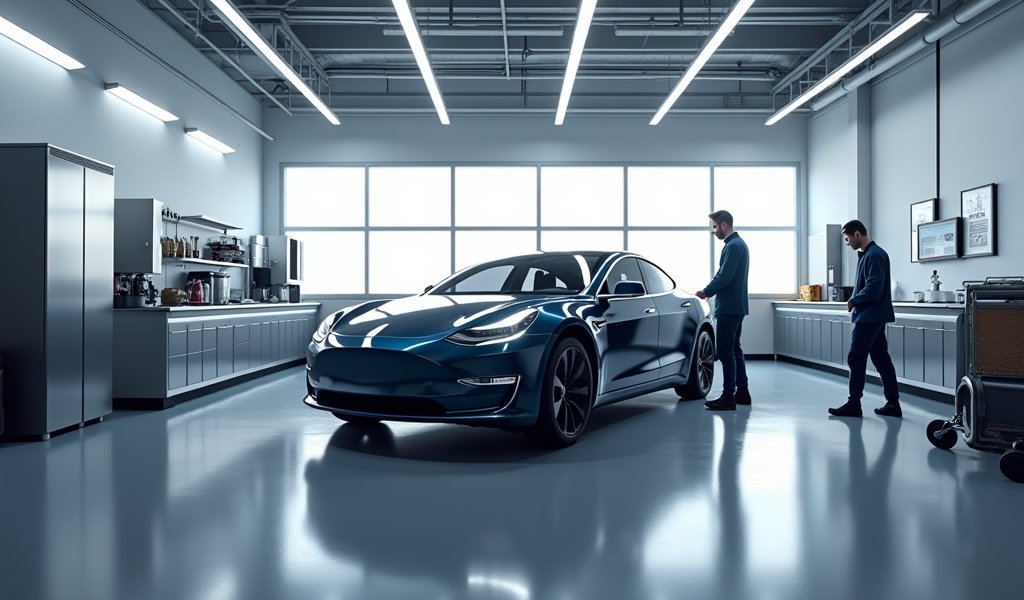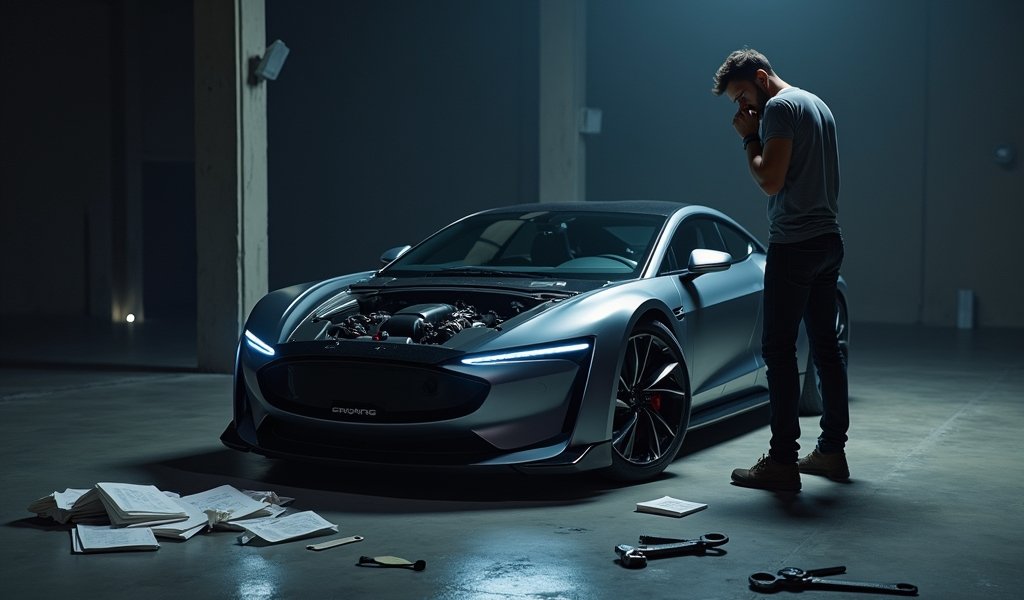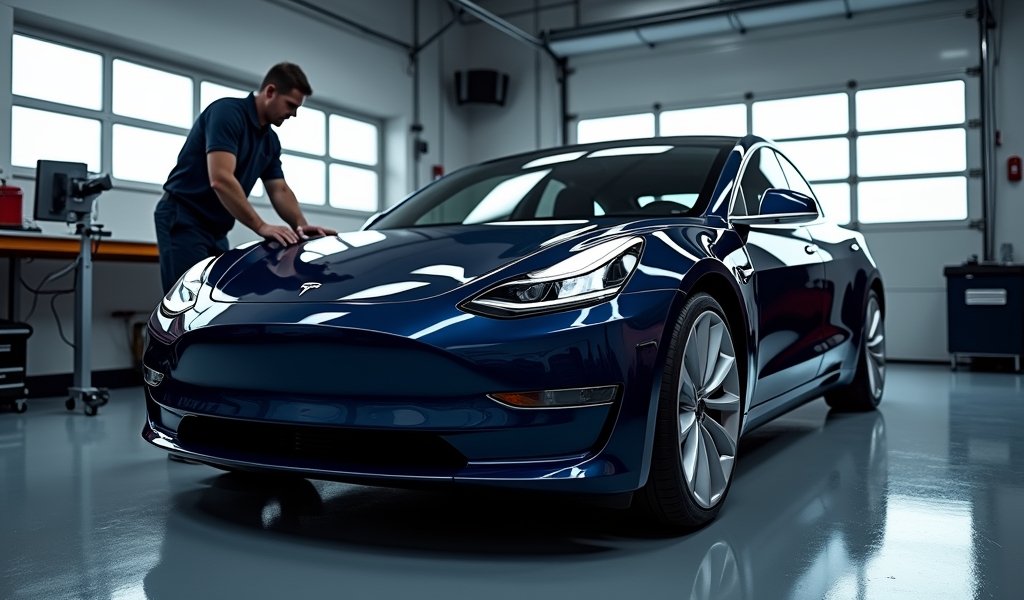Overview
Tesla vehicles offer significantly lower maintenance costs compared to traditional luxury cars, with annual expenses of $175-300 versus $700-1,200 for gas vehicles due to their simplified electric powertrains that eliminate oil changes, transmission service, and other conventional maintenance. While Teslas still require basic care including tire rotations, cabin filter replacements, and brake fluid checks, their regenerative braking systems extend brake life, and proper battery management practices help maintain capacity for 200,000+ miles.
Table of Contents
- Understanding Tesla Maintenance: The Electric Advantage
- Essential Tesla Maintenance Schedule: What You Actually Need
- Maximizing Tesla Battery Longevity: The Heart of Your EV
- Tesla’s Brake System: Less Wear, More Savings
- Budget Planning: Components That Will Eventually Need Replacement
- Insurance and Warranty Considerations: Protecting Your Investment
- Cost Comparison: Tesla vs. Traditional Vehicles
- Conclusion: Is Tesla Maintenance Actually Cheaper?
- Frequently Asked Questions
Understanding Tesla Maintenance: The Electric Advantage
As a mechanic who’s worked on both traditional and electric vehicles, I can tell you firsthand that Tesla maintenance costs typically run lower than comparable luxury vehicles. The fundamental reason is simple: Tesla’s electric powertrain eliminates hundreds of moving parts that would otherwise need regular service.
When a Tesla rolls into my shop, I’m not checking oil levels, replacing fuel filters, or diagnosing transmission issues. These common maintenance tasks that can cost traditional vehicle owners $800-1,200 annually simply don’t exist with Teslas.
Electric vehicles like Tesla operate on a fundamentally different principle. With fewer moving components, there’s less mechanical friction, less wear, and consequently, fewer things that can break down. This streamlined design translates directly to your wallet.
That said, Teslas aren’t maintenance-free. They still require professional attention to ensure optimal performance and longevity. Let me walk you through what actually matters when maintaining your Tesla, based on years of hands-on experience with these revolutionary vehicles.
Essential Tesla Maintenance Schedule: What You Actually Need

Unlike conventional vehicles with strict service intervals, Tesla doesn’t require traditional annual maintenance. This is one of the main factors that keeps the overall service costs lower compared to combustion engine vehicles.
However, there are still several essential maintenance items Tesla recommends to keep your vehicle in top condition:
- Tire rotation: Every 6,250 miles (improves tire longevity and maintains even wear)
- Brake fluid test: Every 2 years (replace if needed)
- Cabin air filter replacement: Every 2 years
- HEPA filter replacement: Every 3 years (if equipped)
- A/C service: Every 2 years (Model S/X) or 6 years (Model 3/Y)
- Brake caliper cleaning/lubrication: Annually in cold regions where road salt is used
The beauty of Tesla’s maintenance approach is its simplicity. Your Tesla mobile app makes tracking these needs straightforward, allowing you to schedule service appointments with just a few taps. You’ll get notifications when service is recommended, taking the guesswork out of maintenance timing.
One key advantage Tesla offers is mobile service. For many maintenance tasks, technicians can come to your home or workplace, saving you the hassle of visiting a service center. This convenience factor isn’t something that shows up on a price sheet, but it’s certainly valuable for busy Tesla owners.
From my experience working with hundreds of Tesla owners, those who follow these basic maintenance recommendations tend to have fewer unexpected issues and better overall vehicle performance. The cost for these routine services typically ranges from $175-300 annually, substantially less than conventional luxury vehicles.
Maximizing Tesla Battery Longevity: The Heart of Your EV
The battery pack is unquestionably the most expensive component in your Tesla. Treating it right can save you thousands in potential replacement costs down the road. After working with EVs for years, I’ve seen batteries maintain over 90% capacity after 100,000 miles with proper care—and others degrade much faster without it.
Here’s what actually works for maximizing battery health:
- Keep your daily charge between 20-90% rather than constantly charging to 100%
- Only charge to 100% when you need the full range for a trip
- Avoid letting the battery sit at very low charge levels (below 10%) for extended periods
- Use scheduled departure features to precondition the battery in cold weather
- For long-term storage, leave the battery at approximately 50% charge
Temperature management plays a crucial role in battery preservation. Extreme heat accelerates degradation, while extreme cold temporarily reduces range. When possible, park in shaded or climate-controlled areas during temperature extremes. Using the Tesla app to precondition the cabin and battery before driving in cold weather not only improves comfort but also reduces battery strain.
Your driving style directly impacts battery health too. While Tesla’s instant torque makes acceleration thrilling, aggressive driving habits increase battery degradation rates. Finding a balance between enjoying your Tesla’s performance and adopting a more moderate driving style can add years to your battery’s effective lifespan.
According to Recurrent’s research on Tesla batteries, most Tesla models retain about 90% of their original capacity after 200,000 miles, which is impressive compared to earlier EV technology. This longevity is partly due to Tesla’s sophisticated battery management system, but your habits still matter significantly.
Tesla’s Brake System: Less Wear, More Savings
One of the most underappreciated maintenance advantages of Tesla ownership is the regenerative braking system. This technology not only improves efficiency but dramatically reduces wear on traditional braking components, resulting in significant maintenance savings.
In conventional vehicles, I typically recommend brake pad replacements every 30,000-50,000 miles, costing owners $300-800 each time. Tesla owners, however, often see their original brake pads last well beyond 100,000 miles. This extended lifespan is possible because regenerative braking uses the electric motor to slow the vehicle, converting kinetic energy back into stored battery energy rather than wearing down brake pads.
To maximize this benefit, adjust your regenerative braking setting to the strongest level comfortable for you. This enables “one-pedal driving” where you rarely need to press the physical brake pedal. Not only does this extend brake component life, but it also improves overall efficiency, adding to your range.
Despite this reduced wear, don’t neglect brake maintenance entirely. I still recommend periodic brake system inspections to ensure proper function. Tesla’s recommended brake fluid tests every two years are important, as brake fluid absorbs moisture over time regardless of brake pad wear.
Many owners are surprised when I show them their barely-worn brake pads after years of driving. It’s one of the most tangible maintenance benefits of Tesla ownership that directly reduces your average service costs over time.
Budget Planning: Components That Will Eventually Need Replacement

While Tesla vehicles require less maintenance overall, several components will need replacement during ownership. Proper budgeting for these predictable expenses helps avoid financial surprises.
Tires are typically the most frequent replacement item for Tesla owners. The instant torque delivery and heavier weight of electric vehicles can accelerate tire wear. Performance Models are particularly demanding on tires. Budget for replacements every 25,000-40,000 miles, with costs ranging from $800-1,500 depending on your model and tire choice.
Cabin air filters are an easy and relatively inexpensive maintenance item. DIY-minded owners can replace these themselves for about $20-30 in parts following Tesla’s instructional videos. Having this done at a service center typically costs $60-150 depending on your location and model.
The 12-volt battery in your Tesla serves a similar function as in conventional vehicles, powering accessories and systems. These typically need replacement every 3-4 years at a cost of $85-200. Unlike traditional vehicles, symptoms of 12-volt battery failure in Teslas can be unusual—like door handles not extending or screens rebooting randomly.
Wiper blades need regular replacement every 6-12 months depending on your climate and usage. These can be purchased directly from Tesla or from third-party suppliers for $20-50.
For higher-end models (particularly Model S and X), the air suspension components may eventually require service. This is typically only necessary after 5+ years of ownership but can be costly when needed ($1,000-2,500 depending on what’s required).
By anticipating these maintenance needs and setting aside appropriate funds, you can ensure your Tesla remains in excellent condition without budget stress. Most owners find these expenses still total significantly less than the major and minor services required by conventional luxury vehicles.
Insurance and Warranty Considerations: Protecting Your Investment
Insurance and warranty options play a significant role in your total Tesla ownership costs. As a mechanic who’s seen countless claims and warranty issues, I can tell you that making informed choices here matters.
Tesla offers its own insurance program in a growing number of states, often at competitive rates for Tesla owners. Unlike traditional insurers, Tesla Insurance uses real-time driving data from your vehicle to determine premiums. Safe drivers can see substantial savings compared to conventional insurance policies. Even if Tesla Insurance isn’t available in your area, shopping for insurers with specific EV experience can yield better rates.
Regarding warranty coverage, Tesla provides a comprehensive 4-year/50,000-mile basic vehicle warranty and an 8-year/100,000-150,000-mile battery and drive unit warranty (mileage varies by model). This exceeds many traditional manufacturers’ offerings and provides solid protection during early ownership.
For extended ownership, Tesla offers an Extended Service Agreement that can be purchased before your basic warranty expires. These typically range from $2,000-4,500 depending on your model and chosen coverage period. Based on my repair experience, these can be worthwhile investments, particularly for the more complex Model S and X.
When considering extended warranty options, evaluate:
- Your planned ownership duration
- Your comfort with potential out-of-pocket repair costs
- Your vehicle’s current reliability record
- Whether you prefer Tesla service or are comfortable with third-party options
According to Consumer Reports reliability data, newer Tesla models have shown improving reliability trends, which may influence your warranty decisions. While Teslas eliminate many traditional mechanical failure points, their advanced technology can introduce different repair scenarios that warranty coverage helps mitigate.
Cost Comparison: Tesla vs. Traditional Vehicles
After working on hundreds of vehicles of all types, I can share some real-world maintenance cost comparisons between Teslas and traditional luxury vehicles. The numbers consistently favor Tesla ownership from a maintenance perspective.
The average annual maintenance cost for Tesla models typically ranges from $175-300 for routine maintenance. Equivalent luxury gasoline vehicles generally run $700-1,200 annually. This substantial difference comes primarily from eliminating these recurring conventional vehicle expenses:
- Oil changes: $40-150 every 3,000-10,000 miles
- Transmission service: $150-400 every 30,000-60,000 miles
- Engine air filters: $50-100 every 15,000-30,000 miles
- Spark plugs: $200-300 every 60,000-100,000 miles
- Fuel system maintenance: $100-800 as needed
- More frequent brake service: $300-800 every 30,000-50,000 miles
- Belts and hoses: $150-500 every 60,000-100,000 miles
Over a 10-year ownership period, the maintenance savings can reach $5,000-10,000 compared to a similar gas-powered luxury vehicle. This doesn’t even account for fuel savings, which typically add several thousand more in reduced operating costs.
That said, Tesla repairs, when needed, can be expensive. Components like the large touchscreen display ($1,500-2,500) or complex door handles on Model S/X ($150-450 each) represent potential costs that traditional vehicles might not have. However, these repairs are generally less frequent than the routine maintenance conventional vehicles require.
The total cost of ownership equation strongly favors Tesla and other electric vehicles, especially for those planning longer-term ownership. The maintenance advantage becomes more pronounced the longer you own the vehicle, as you avoid major services that conventional vehicles require at higher mileages.
Conclusion: Is Tesla Maintenance Actually Cheaper?
After years of working with both conventional and electric vehicles, I can confidently say that yes, Tesla maintenance costs are significantly lower than comparable luxury vehicles. The simplicity of the electric powertrain eliminates dozens of maintenance items that would otherwise drain your wallet over years of ownership.
The biggest savings come from what you don’t need: no oil changes, no transmission services, no exhaust system repairs, and dramatically reduced brake wear. These routine expenses add up quickly with conventional vehicles but are simply non-existent with Teslas.
That said, Tesla ownership still requires attention to maintenance basics. Proper tire care, battery management practices, and following Tesla’s recommended service schedule are essential to maximize your vehicle’s performance and longevity. The most successful Tesla owners I’ve worked with take a proactive approach, addressing small issues before they become expensive problems.
While the initial purchase price of a Tesla may be higher than some conventional alternatives, the reduced maintenance burden significantly improves the total cost of ownership equation. When you factor in potential fuel savings, available tax incentives, and strong Tesla resale values, the financial case becomes even more compelling.
For most owners, the combination of lower maintenance costs, reduced environmental impact, and the sheer joy of driving an electric vehicle makes Tesla ownership a rewarding experience. The maintenance savings are just one part of what makes these revolutionary vehicles increasingly attractive to informed drivers.
Frequently Asked Questions
What is the average annual maintenance cost for a Tesla?
The average annual maintenance cost for a Tesla ranges from $175-300 for routine items like tire rotations, cabin filters and fluid checks. This is significantly lower than the $700-1,200 typically spent on comparable luxury gas vehicles.
Do Teslas require oil changes?
No, Teslas do not require oil changes as they use electric motors rather than internal combustion engines. This eliminates one of the most common and recurring maintenance expenses of traditional vehicles.
How often do Tesla brakes need to be replaced?
Tesla brake pads typically last 100,000+ miles due to regenerative braking that reduces physical brake use. This is 2-3 times longer than conventional vehicles, which generally need brake service every 30,000-50,000 miles.
When should I replace my Tesla’s battery?
Most Tesla batteries don’t require replacement during normal vehicle lifespan, retaining 80-90% capacity after 200,000+ miles with proper care. Battery replacement is typically only necessary in cases of defects or unusual degradation, which are covered under Tesla’s 8-year battery warranty.
Are Tesla tires more expensive to replace?
Tesla tires cost approximately the same as tires for comparable luxury vehicles, ranging from $150-350 per tire depending on model and specifications. However, they may wear faster due to the vehicle’s weight and instant torque, requiring replacement every 25,000-40,000 miles.


Pingback: Electric Car Maintenance Tips That Work - knowsyourcar.com